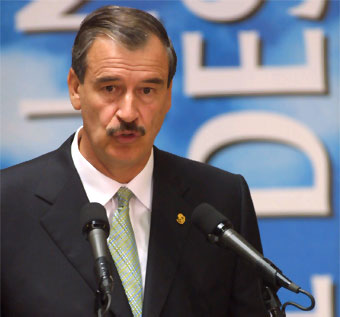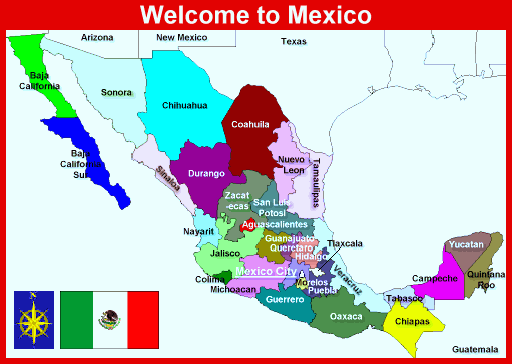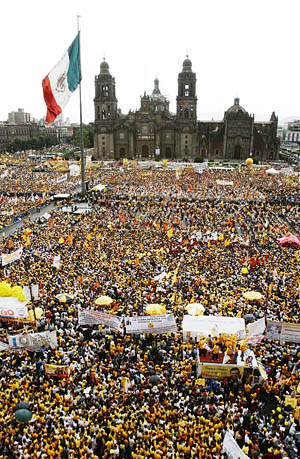US
Presidential System
presidencialismo
strong presidency
presidency was controlled by the PRI until 2000
one term, 6 years
pres selects successor
Presidential elections - Jul 2000


History
Home two of the three great American civilizations
pre-dating European colonization
Mayan and Aztec
Colonial power Spain
Neo-colonial relationship with
US
in what sense?
“Poor Mexico, so far from God, and so close to US.”
Model for political insts
US
Presidential System
presidencialismo
strong presidency
presidency was controlled by the PRI until
2000
one term, 6 years
pres selects successor
Presidential elections - Jul
2000

2000 results
Vicente FOX Quesada (PAN) 42.52%,
Francisco LABASTIDA Ochoa (PRI) 36.1%
Cuauhtemoc CARDENAS Solorzano (PRD) 16.64%
other 4.74%
Presidential election 2 July
2006
Story on:
The candidates:
Obrador (PRD) and Calderon (PAN)
Deep divisions
in Mexican society

Legislative Branch: post
1990s reforms
Senate
Federal system
States each have 2 seats in Senate
128 senators:
Each party nominates 2 candidates who run
and are elected together by direct vote
The
party of the 2 candidates that won the second highest vote within the
state or the Federal District
then assigns a senator to occupy the third seat (first minority seat),
according to the list of candidates that the party
registered before
Thus,
64 are elected by plurality
vote
2
for each of the 31 states
2 for the Federal District
Lower House
Chamber of Deputies
500 members, all elected
for 3 year term at same time (2006, 2009, etc.)
300 are elected SMD, 200 are election PR
Deputies are not allowed
to serve consecutive terms
Political Parties
PRI - Revolutionary Institutional Party
Sucessor to National Revolutionary Party founded by
Pres. Calles
in 1929 (demilitarized Mexican politics)
Controlled
Mexican presidency from 1946-2000
Platform? PRI site
populism
nationalism
promoted nationalization
(petroleum,
RR, land)
corrupt, elections irregularities
corruption aggravated by petro boom in 90s
Last PRI president - Ernesto
Zedillo
Candidate in 2000: Labastida
Beyond single-party rule in Mexico?
PAN - National Action Party
(Fox’s party)
center-right;
neo-liberal economicss
denationalization
PRD - Democratic Revolutionary
Party
leftist, populist
for agricultural collectives
state ownership
of industry
Rebellion in Chiapas
Zapatista movement
see especially the section on the Seven Loose Pieces of the
Global Economy
Mexican economy
produces and exports large amounts
of steel, beer, oil, agricultural
products
75% of exports go to US
Oil industry - PEMEX
nationalized, monopoly
but also joint ventures with MNCs
like Shell
Early 90s
The Blessed Years
Salinas - credit more available
Nafta signed
then peso rapidly devalued
Economic crisis
credit - extremely high interest
rates
on people homes, cars
Late-90s/early 21st Century
"Globalization" vs. Continued Economic Relationship with the US
Export Processing Zones
Maquilas